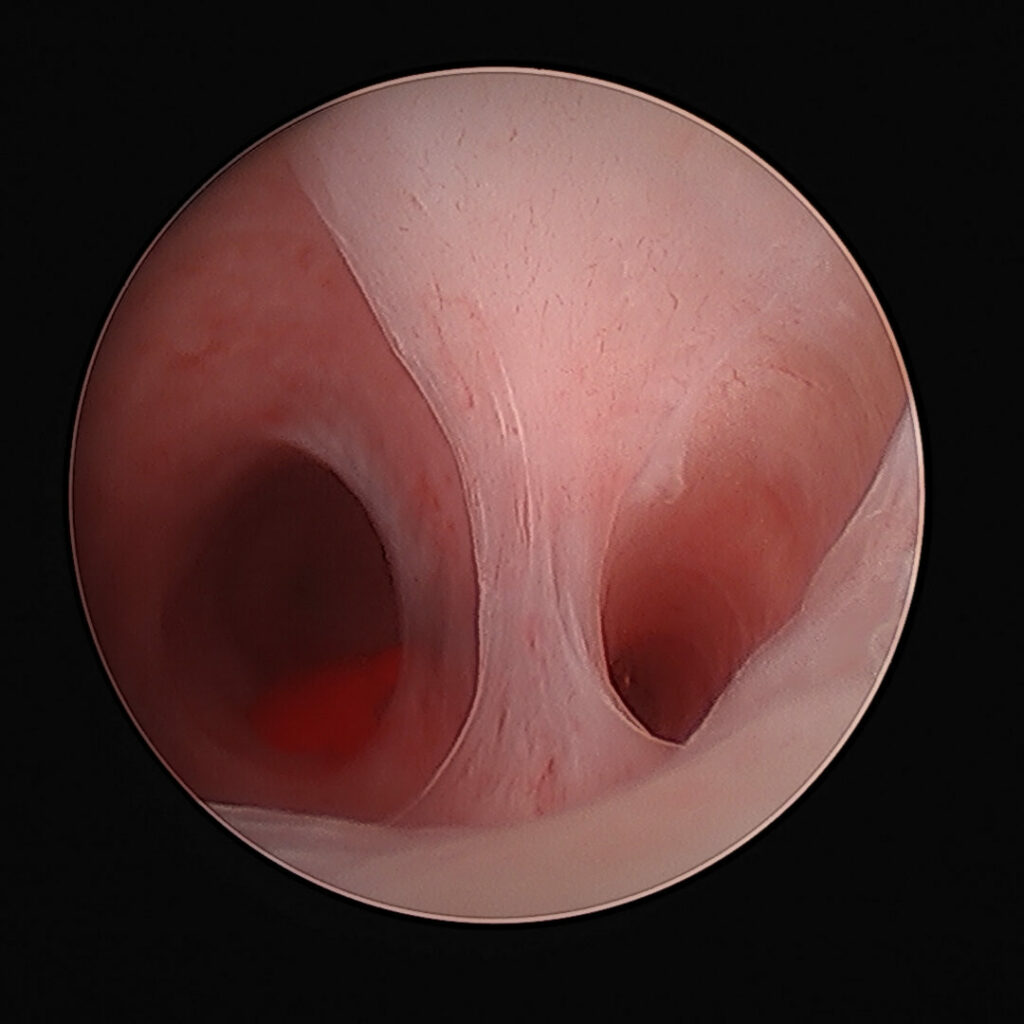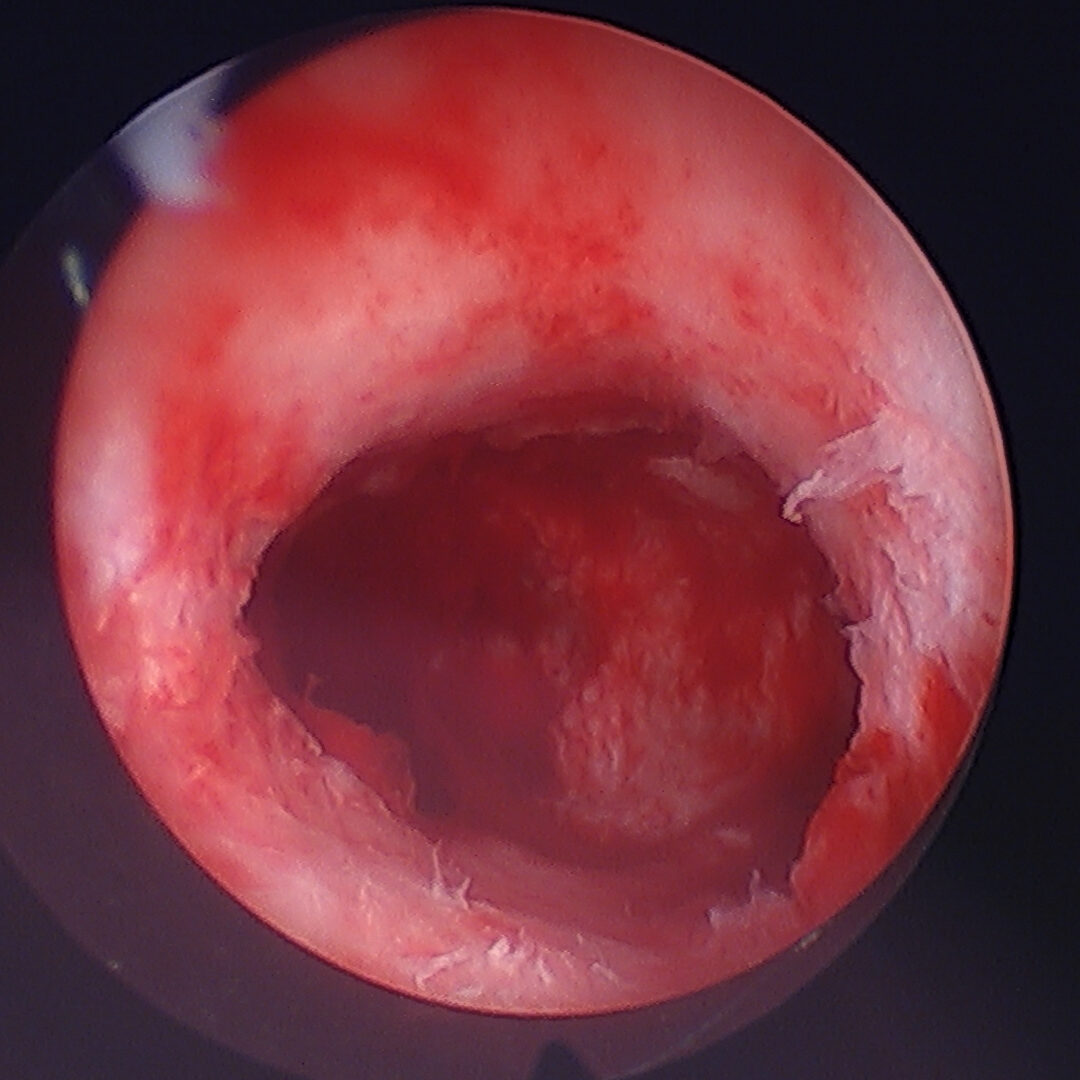Advanced Hysteroscopy



Touchless hysteroscopy can be performed with ease by inserting the camera vaginally (vaginoscopy) and inserting directly into the cervix if pre-softened before surgery. This allows the surgeon to visualize and see the native angle of the cervix and relation of endometrial cavity to the cervix. We perform this with video and photo recording for use of the patient or reproductive endocrinologist in the future.
In cases of severe retroverted uterus or cavity abnormality like isthmocele this technique can greatly aid in seeing the native anatomical angle and need for optimization.
Following this additional techniques can be employed, dilating the cervix to maximum, performing endometrial scratch and biopsy for endometritis (CD138).
In cases of prior difficult or painful embryo transfer or patients with severe painful intercourse we can perform concurrent uterine suspension to lift the correct the uterine angle to anteverted or neutral position.
This can be particularly helpful for patients with difficult transfer, false passage created into the cervix. Difficult IUD placement or intracervical endocervical abnormalities.
Septum excision can be performed for correction of significant septum/arcuate uterus in patients with miscarriage, failed embryo transfer or other indications. This can also relieve dysfunctional uterine bleeding in patients with dark clots/ irregular menstrual bleeding.
The BCL-6 Test
The BCL-6 test is a test performed as part of the receptiva test with biopsy from the endometrial cavity. It can be performed in an office setting. It was first studied and identified by Dr Bruce Lessey and now is performed at Cicero diagnostics.
What is BCL-6 and its role in endometriosis?
Researchers identified BCL-6 (B-cell lymphoma 6) as an oncogene or a gene that may affect the development of cancer. This gene plays a role in cell development, cell death, and inflammation. Research has shown that an excess of the protein that this gene encodes, increases various inflammatory cytokines and can alter the immune environment.
More recent work has shown that the BCL-6 protein is overexpressed during the secretory phase of the menstrual cycle in women with endometriosis. The levels of BCL-6 were also high in a significant number of women with unexplained infertility. Many of these women eventually received a diagnosis of endometriosis via laparoscopy.
Therefore, some physicians are using high BCL-6 values as an important predictor of possible endometriosis and poor IVF outcomes.
How does it work?
Your OB/GYN can perform a BCL-6 test, which involves an endometrial biopsy during an office visit. You will undergo a routine speculum exam and may experience brief cramping or pain during and after the procedure. You can pre-medicate with over the counter pain medication.
Your doctor will typically take the biopsy 7 to 10 days after ovulation (during the luteal phase) or after about four days following increased luteinizing hormone (LH) levels. He or she will help with the timing of the biopsy or may give you medication to simulate this phase if your periods are not regular.
The ReceptivaDx Test will be sent out and processed to look for the BCL-6 protein marker and the results will usually become available within a week.
What is the cost of a BCL-6 test?
The ReceptivaDx BCL-6 test kit itself costs US $690. Additional biomarkers can be added for a more sensitive result. This pricing may vary depending on the clinic and does not include the cost of the Dr visit or biopsy test itself being performed. This is only the cost for Cicero Diagnostics to run the test.
Beta 3 Integrin can be added for $250 and CD-138 is a marker that is useful in diagnosing endometritis (inflammation of the endometrium) and can be added for an additional US$145.
This can be done at a traditional OB-GYN office, and endometriosis practice or a reproductive endocrinologist office.
The Receptiva website can allow you to find which centers are able to perform the test.
What are the implications of undergoing BCL-6 testing and what do the results mean?
A positive BCL-6 test result points to the presence of inflammation in the uterine lining. Researchers think that this inflammation affects reproductive outcomes and leads to infertility (difficulty conceiving spontaneously after 12 months of trying on your own or 6 months after age 35).
The most common cause of unexplained infertility is endometriosis with over 50% of cases being caused by this. If this is suspected it may require diagnostic and therapeutic laparoscopic surgery to remove disease and restore the anatomy. If so, we recommend deep excision surgery
Does BCL-6 + definitively mean you have endometriosis?
No. BCL-6 positivity has a strong correlation with endometriosis but it is performed from the endometrial cavity inside the uterus. It does not evaluate the disease inside the pelvis which can only be done via laparoscopy. It can be very helpful for patients experiencing infertility with recurrent implantation failure or miscarriage and otherwise “silent endometriosis.”
BCL-6 positivity along with other inflammatory markers can strongly suggest Endometriosis may be present.